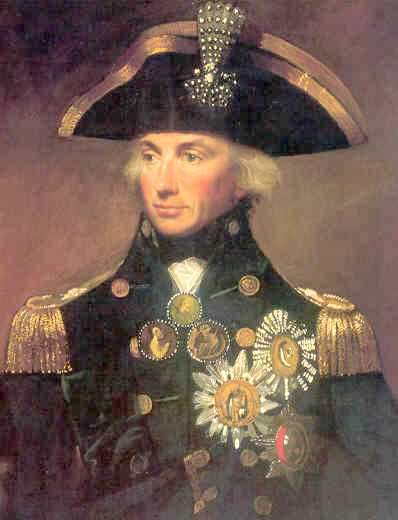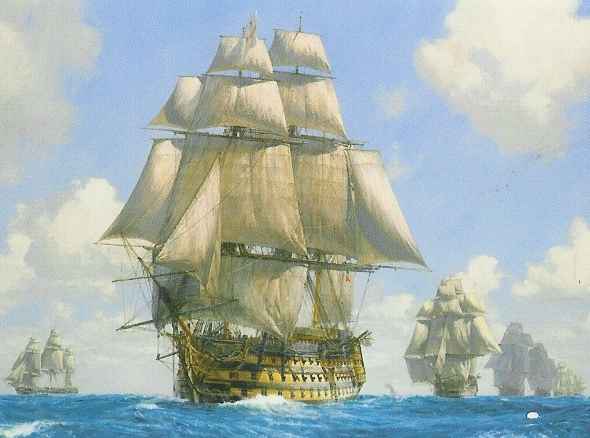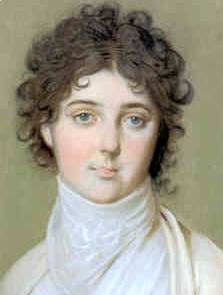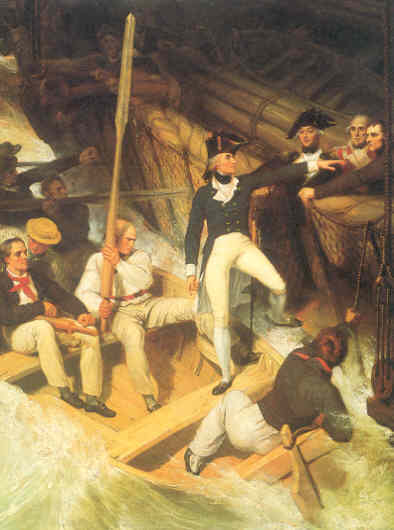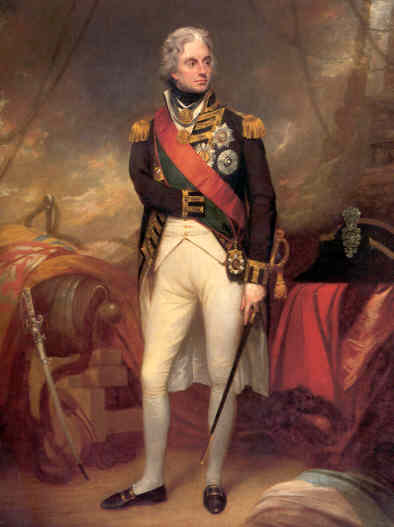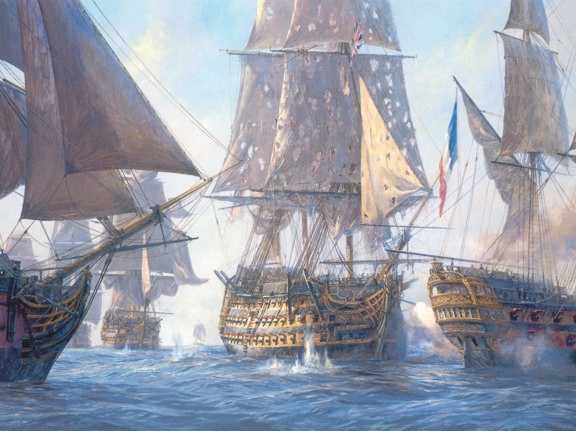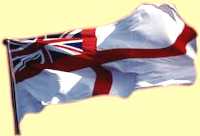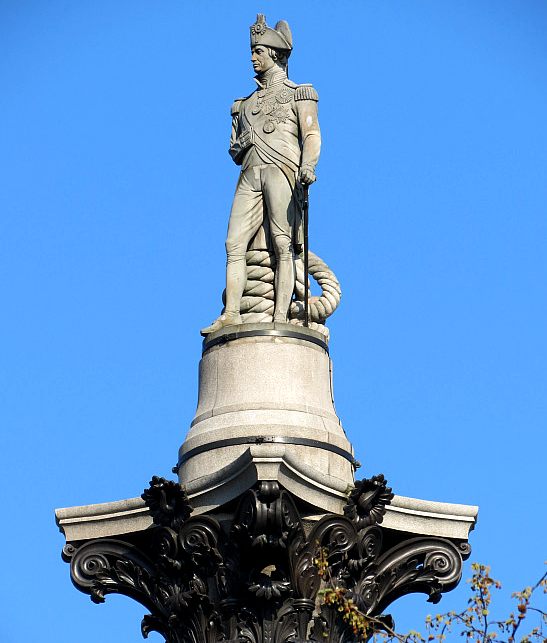|
ADMIRAL HORATIO NELSON - THE ROYAL NAVY
HOME | BIOLOGY | GEOGRAPHY | HISTORY | INDEX | MONEY | SPORT
|
||||||
|
Horatio Nelson, 1st Viscount Nelson, KB (September 29, 1758 – October 21, 1805) was a British admiral who won fame as a leading naval commander. He is famous for his participation in the Napoleonic Wars, most notably in the Battle of Trafalgar, where he lost his life. He became a naval hero in the United Kingdom, eclipsing Admiral Robert Blake in fame. His biography by the poet Robert Southey appeared in 1813, while the wars were still being fought. His love affair with Emma Hamilton, the wife of the British ambassador to Naples is also well known, and he is honoured by the London landmark of Nelson's Column, which stands in Trafalgar Square.
Lord Nelson's full title, at the time of his death, was Vice Admiral of the White The Right Honourable Horatio, Viscount Nelson, Knight of the Most Honourable Order of the Bath. In addition, he was Baron Nelson, of the Nile and of Burnham Thorpe in the County of Norfolk, Baron Nelson, of the Nile and of Hillborough in the County of Norfolk, Duke of Bronte in the nobility of the Kingdom of the Two Sicilies, Knight of the Grand Cross of the Order of St Ferdinand and of Merit and a Knight of the Ottoman Empire's Order of the Crescent,Knight Grand Commander of the Order of St Joachim, Colonel of the Marines, Freeman of Norwich, Bath, Yarmouth, London, Salisbury and Exeter.
Lord Nelson 1758-1805
Lord Nelson was born in the village of Burnham Thorpe on 29th September 1758 where his father Edmund was the vicar and also rector of the nearby village of Burnham Market. Nelson returned to the village with his wife and they lived at St Edmunds Rectory from 1787-1793.
At the age of 12 Nelson joined H.M.S. Raisonnable, commanded by his uncle, Captain Maurice Suckling. His first great opportunity came during the American war of Independence (1775-1782). In 1787 he married Frances Nesbit, the widowed niece of the President of Nevis. Following his marriage and in peacetime, Nelson could not persuade the Admiralty to give him a command.
In 1793 the war began with Napoleonic France. Nelson was then given command of 'Agamemnon', a sixty gunner and appointed to Lord Hood's fleet. There followed an exceptionally active career with several distinctions, until in May 1803, Nelson, now a vice admiral of the Blue was appointed to the command of the Mediterranean Fleet with his flag in H.M.S. 'Victory'. On 21st October 1805 the last great action of the days of sail was fought out in the historic waters off Cape Trafalgar. 27 British ships faced 33 French and Spanish. Nelson won an annihilating victory, the battle beginning with the hoisting of the most famous signal in British naval history: "England expects every man to do his duty." In his hour of triumph Nelson fell to a bullet fired by a marksman in the fighting top of the French ship 'Redoutable'.
Flag signal: "England Expects Every Man to do His Duty"
Command
In 1784, Nelson was given command of the 28-gun Boreas, and assigned to enforce the Navigation Act in the vicinity of Antigua. This was during the denouement of the American Revolutionary War, and enforcement of the act was problematic - now-foreign American vessels were no longer allowed to trade with British colonies in the Caribbean Sea, an unpopular rule with both the colonies and the Americans. After seizing four American vessels off Nevis, Nelson was sued by the captains of the ships for illegal seizure. As they were supported by the merchants of Nevis, Nelson was in peril of imprisonment and had to remain sequestered on Boreas for eight months. It took that long for the courts to deny the captains their claims, but in the interim Nelson met Fanny Nesbit, a widow native to Nevis, whom he would marry on March 11, 1787 at the end of his tour of duty in the Caribbean.
Nelson lacked a command starting in 1789, and lived on half pay for several years. But as the French Revolution began to export itself outside of France's borders, he was recalled to service. Given the 64-gun Agamemnon in 1793, he soon started a long series of battles and engagements that would seal his place in history.
He was first assigned to the Mediterranean, based out of the Kingdom of Naples. In 1794 he was shot in the face during a joint operation at Calvi, Corsica, which cost him both half of his right eyebrow and the sight in his right eye. Despite popular legend, there is no evidence that Nelson ever wore an eye patch, though he was known to wear an eyeshade to protect his remaining eye. In 1796, the command-in-chief of the fleet in the Mediterranean passed to Sir John Jervis, who tapped Nelson to be commodore of his flagship the HMS Captain.
Admiralty
1797 was a full year for Nelson. On February 14, he was largely responsible for the British victory at the Battle of Cape St. Vincent. In the aftermath, Nelson was knighted as a member of the Order of the Bath (hence the postnominal initials "K.B."). In April of the same year he was promoted to Rear Admiral of the Blue, the tenth highest rank in the Royal Navy. Later in the year, during an unsuccessful expedition to conquer Santa Cruz de Tenerife, he was shot in the right elbow with a musket ball. He lost the lower half of his right arm, and was unfit for duty until mid-December.
This was not his only reverse. In December 1796, on leaving Elba for Gibraltar, Nelson transferred his flag to the frigate Minerve (of French construction, commanded by Captain Cockburn). A Spanish frigate, Santa Sabina, was captured during the passage and Lieutenant Hardy was put in charge of the captured vessel. The following morning, two Spanish ships of line and one frigate appeared. Nelson decided to flee, leaving the Sabina to be recovered by the Spanish and Hardy was captured. The Spanish captain who was on board Minerve was later exchanged for Hardy in Gibraltar.
In 1798, Nelson was once again responsible for a great victory over the French. The Battle of the Nile (also known as the Battle of Abukir Bay) took place on August 1, 1798 and, as a result, Napoleon's ambition to take the war to the British in India came to an end. The forces Napoleon had brought to Egypt were stranded. Napoleon attempted to march north along the Mediterranean coast but was defeated at the Siege of Acre by Captain Sir Sidney Smith.
Napoleon then left his army and sailed back to France, evading detection by British ships. For the spectacular victory of the Nile, Nelson was granted the title of Baron Nelson (Nelson felt cheated that he was not awarded a greater title; Sir John Jervis had been made Earl of St Vincent for his part in that battle, but the British Government insisted that an officer who was not the commander-in-chief, could not be raised to any peerage higher than a barony; Nelson felt through his life that his accomplishments were not fully rewarded by the British government, a fact he ascribed to his more humble birth and lack of political connections when compared to Sir John Jervis, or The Duke of Wellington).
Emma Hamilton
Not content to rest on his laurels, he then rescued the Neapolitan royal family from a French invasion in December. During this time, he fell in love with Emma Hamilton the young wife of the elderly British ambassador to Naples. She became his mistress, returning to England to live openly with him, and eventually they had a daughter, Horatia. Some have suggested that a head wound he received at Abukir Bay was partially responsible for that conduct, and for the way he conducted the Neapolitan campaign—due simultaneously to his English hatred of Jacobins and his status as a Neapolitan royalist (he had been made Duke of Bronte in Sicily by the King of Naples in 1799)—now considered something of a disgrace to his name. He was accused of allowing the monarchists to kill prisoners contrary to the laws of war.
In 1799, he was promoted to Rear Admiral of the Red, the seventh highest rank in the Royal Navy. He was then assigned to the new second-rate Foudroyant. In July, he aided Admiral Ushakov with the reconquest of Naples, and was made Duke of Bronte by the Neapolitan king. His personal problems, and upper-level disappointment at his professional conduct caused him to be rotated back to England, but public knowledge of his affection for Lady Hamilton eventually induced the Admiralty to send him back to sea if only to get him away from her. On January 1, 1801, he was promoted to Vice Admiral of the Blue (the sixth highest rank).
Within a few months he was involved in the Battle of Copenhagen (April 2, 1801), which nullified the fleet of the Danes, in order to break up the armed neutrality of Denmark, Sweden and Russia. During the battle Nelson was ordered to cease the battle by his commander Sir Hyde Parker who believed that the Danish fire was too effective. In a famous incident, however, Nelson claimed he could not see the signal flags conveying the order, pointedly raising his telescope to his blind eye. His action was approved in retrospect, and in May he became commander-in-chief in the Baltic Sea, and was awarded the title of Viscount Nelson by the British crown.
Napoleon was amassing forces to invade England, however, and Nelson was soon placed in charge of defending the English Channel to prevent this. However, on October 22 an armistice was signed between the British and the French, and Nelson—in poor health again—retired to England where he stayed with his friends, Sir William and Lady Hamilton.
Trafalgar
The Peace of Amiens was not to last long though, and Nelson soon returned to duty. He was appointed commander-in-chief of the Mediterranean, and assigned to HMS Victory in May 1803. He joined the blockade of Toulon, France, and would not again set foot on dry land for more than two years. Nelson was promoted to Vice Admiral of the White (the fifth highest rank) while he was still at sea, on 23 April 1804. The French fleet slipped out of Toulon in early 1805 and headed for the West Indies (see battle of Cape Finisterre (1805) for a summary of this campaign). A stern chase failed to turn them up and Nelson's health forced him to retire to Merton in England.
Within two months his ease ended. On September 13, 1805, he was called upon to oppose the French and Spanish fleets, which had managed to join up and take refuge in the harbour of Cádiz, Spain.
On October 21, 1805, Nelson engaged in his final battle, the Battle of Trafalgar. Napoleon Bonaparte had been massing forces once again for the invasion of the British Isles. However, he had already decided that his navy was not adequate to secure the Channel for the invasion barges and had started moving his troops away for a campaign elsewhere in Europe. On the 19th, the French and Spanish fleet left Cádiz, probably because Pierre-Charles Villeneuve, the French commander, had heard that he was to be replaced by another admiral. Nelson, with twenty-seven ships, engaged the thirty-three opposing ships.
His last dispatch, written on the 21st, read:
As the two fleets moved towards engagement, he then ran up a thirty-one flag signal to the rest of the fleet which spelled out the famous phrase "England expects that every man will do his duty".
Nelson falls
After crippling the French flagship Bucentaure, the Victory moved on to the Redoutable. The two ships entangled each other, at which point snipers in the fighting tops of the Redoutable were able to pour fire down onto the deck of the Victory. Nelson was one of those hit: a bullet entered his shoulder, pierced his lung, and came to rest at the base of his spine. Nelson retained consciousness for four hours, but died soon after the battle was concluded with a British victory. The Victory was then towed to Gibraltar, with Nelson's body on board preserved in a barrel of brandy. Upon his body's arrival in London, Nelson was given a state funeral and entombment in St. Paul's Cathedral. He was laid to rest in a wooden coffin made from the mast of L'Orient which had been salvaged after the Battle of the Nile.
According to a legend, naval rum rather than brandy was used to preserve his body. It was supposedly illicitly half drunk by the time it reached London; the crew were supposed to have sucked out the rum using thin straws. This gives rise to the slang term "tapping the Admiral", meaning illicit drinking, and may be related to the nickname given to Naval rum rations later, "Nelson's Blood", (although this is possibly a deliberate echo of the Communion ritual).
Nelson
expressed a wish to be laid to rest with his family in
the local cemetery but after his death at the battle of
Trafalgar on 21st October 1805 the crypt at
St Paul’s Cathedral was chosen as his final resting
place.
Legacy
Nelson was noted for his considerable ability to inspire and bring out the best in his men, to the point that it gained a name: "The Nelson Touch". Famous even while alive, after his death he was lionized like almost no other military figure in British history (his only peers are the Duke of Marlborough and Nelson's contemporary, the Duke of Wellington). Nelson was included in the top 10 of the 100 Greatest Britons poll sponsored by the BBC and voted for by the public.
Most military historians believe Nelson's ability to inspire officers of the highest rank and seamen of the lowest was central to his many victories, as was his unequaled ability to both strategically plan his campaigns and tactically shift his forces in the midst of battle. He may have been the greatest field commander in history. Certainly he stands as the greatest warrior afloat. It must also be said that his "Nelson touch" also worked with non-seamen; he was beloved in England by virtually everyone. (The only people not affected by him were those offended by his affair with Lady Hamilton!)
Admiral Nelson
Monuments to Nelson
The monumental Nelson's Column and the surrounding Trafalgar Square are notable locations in London to this day, and Nelson was buried in St. Paul's Cathedral. In Scotland, Nelson's Monument was constructed atop Calton Hill in Edinburgh. A Monument in Great Yarmouth to Nelson was started before his death but only completed in 1819. This is sometimes known as the Britannia monument as it is topped by that martial female rather than a statue of Nelson; a statue to Nelson can however be found in Norwich alongside Wellington.
In Montreal there is a monument to Nelson erected in 1809 in Place Jacques Cartier which was a market place at the time. It has carved scenes from Nelson's career around the base and the statue on top was claimed to be the oldest public statue of Nelson in the world. It has been removed due to excessive weathering.
There is also the Nelson memorial in Swarland, Northumberland which was raised as a private memorial of Nelson by his friend and sometime agent, Alexander Davison. The monument to Nelson in Dublin was destroyed by an IRA bomb (see Nelson's Pillar).
Nelson Island on the Sunshine Coast, British Columbia, Canada is named after Horatio Nelson.
Horatio Nelson's Victory at Trafalgar
Nelson and the Royal Navy
Victory is still kept on active commission in honour of Nelson — it is the flagship of the Second Sea Lord, and is the oldest commissioned ship of the Royal Navy. She can be found in Number 2 Dry Dock of the Royal Navy Museum at the Portsmouth Naval Base, in Portsmouth, England.
Two Royal Navy battleships have been named HMS Nelson in his honour. The Royal Navy celebrates Nelson every October 21 by holding Trafalgar Day dinners and toasting "The Immortal Memory" of Nelson.
The bullet that killed Nelson is permanently on display in the Grand Vestibule of Windsor Castle. The uniform that he wore during the battle, with the fatal bullet hole still visible, can be seen at the National Maritime Museum in Greenwich. A lock of Nelson's hair was given to the Imperial Japanese Navy from the Royal Navy after the Russo-Japanese war to commemorate the victory at the Battle of Tsushima. It is still on display at Kyouiku Sankoukan, a public museum maintained by the Japan Self-Defense Forces.
The Battle of Trafalgar - by Montague Dawson
Nelson's Descendants
Nelson had no legitimate children; his illegitimate daughter by Lady Hamilton, Horatia, subsequently married the Rev. Philip Ward and died in 1881. She and Rev. Ward had nine children: Horatio Nelson Ward (born December 8, 1822); Eleanor Phillipa Ward (born April 1824); Marmaduke Philip Smyth Ward (born May 27, 1825); John James Stephen Ward (February 13, 1827-1829); Nelson Ward (born May 8, 1828); William George Ward (born April 8, 1830); Edmund Ward (July 10, 1832-1833); Horatio Ward (born November 24, 1833), Philip Ward (born May 1834); Caroline Ward (born January 1836).
Because Lord Nelson had no legitimate heirs, the Viscountcy and 1798 Barony of Nelson (both "of the Nile and of Burnham Thorpe in the County of Norfolk") became extinct upon his death. However, the 1801 Barony of Nelson ("of the Nile and of Hilborough in the County of Norfolk") passed by a special remainder to Lord Nelson's brother, The Revd William Nelson. William was also created Earl Nelson in recognition of his brother's services, which title is still extant.
Literary Influences
Although Nelson's exploits are often claimed to have provided inspiration for fictional characters such as Jack Aubrey, Horatio Hornblower and Honor Harrington, a close reading of the books does not bear this out. It is more likely Nelson's fame makes him the only Naval figure of the time that reviewers recall.
Last words
It is a common misconception that Nelsons last words were "kiss me Hardy" or "kismet Hardy", said to captain of HMS Victory, Thomas Hardy. His actual last words are believed to be:
The Victory breaks the French line - Battle of Trafalgar
L E T T E R S & D I S P A T CH E S
References
This article incorporates text from the public domain 1911 Encyclopædia Britannica.
Coleman, Terry (2004). The Nelson Touch: The life and legend. Oxford University Press. ISBN 0195173228.
For God and Glory: Lord Nelson and His Way of War by Hayward, Joel S. A.(2003)
Nelson: Love & Fame Vincent,Edgar (2003)
Nelson A Personal History by Hibbert, Christopher (1994) Further reading
Michener, James, A. 1989. Caribbean. Secker & Warburg. London. ISBN 0-436-27971-1 (Especially Chap. VIII. "A Wedding on Nevis", pp. 289-318). Some of it is fictionalised, ". . . but everything said about Nelson and his frantic search for a wealthy life is based on fact." Pocock, Tom 1987, Horatio Nelson. The Bodley Head. London. ISBN 0-370-31124-8 Lambert, Andrew Nelson - Britannia's God of War. Faber and Faber. London. ISBN 0-571-21222-0 Good new general biography; particularly helpful final two chapters on reactions to Nelson after his death, down to the current day. Sugden, John Nelson - A Dream of Glory. Jonathan Cape. London. ISBN 0-224-06097-X Outstanding and extremely thorough account of Nelson's life as far as the battle of St. Vincent.
The Battle of Trafalgar
LINKS
The Death of Nelson' (1806) by Benjamin West 'Life onboard HMS Victory: an educational resource Tapping the Admiral from World Wide Words. The Death of Lord Nelson, 1807, by William Beatty from Project Gutenberg
GENERAL HISTORY LINKS
The Battle of Trafalgar computer game
MARITIME HISTORY
Nelson's Column is a monument in Trafalgar Square in central London built to commemorate Admiral Horatio Nelson, who died at the Battle of Trafalgar in 1805. The monument was constructed between 1840 and 1843 to a design by William Railton at a cost of £47,000. It is a column of the Corinthian order built from Dartmoor granite. The Craigleith sandstone statue of Nelson is by E. H. Baily and the four bronze
lions on the base, added in 1867, were designed by Sir Edwin Landseer.
|
||||||
|
This website is Copyright © 1999 & 2015 Max Energy Limited, an environmental educational charity working hard for world peace. The names SeaVax™, Blueplanet Ecostar BE3™ and Miss Ocean™ are trademarks. All other trademarks are hereby acknowledged.
|
